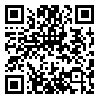1. Cacioppo JT, Patrick W. Loneliness: human nature and the need for social connection. WW Norton & Company; 2008.
2. Peplau LA, Perlman D. Loneliness: a sourcebook of current theory, research and therapy. John Wiley & Sons Incorporated; 1982.
3. Victor CR, Yang K. The prevalence of loneliness among adults: a case study of the United Kingdom. J Psychol. 2012;146(1–2):85–104. [
DOI]
4. Diehl K, Jansen C, Ishchanova K, Hilger-Kolb J. Loneliness at universities: determinants of emotional and social loneliness among students. Int J Environ Res Public Health. 2018;15(9):1865. [
DOI]
5. Matos M, Duarte J, Pinto-Gouveia J. The origins of fears of compassion: shame and lack of safeness memories, fears of compassion and psychopathology. J Psychol. 2017;151(8):804–19. [
DOI]
6. Rokach A. The psychological journey to and from loneliness: development, causes, and effects of social and emotional isolation. First edition. Elsevier Science & Technology; 2019. [
DOI]
7. Spithoven AWM, Bijttebier P, Goossens L. It is all in their mind: a review on information processing bias in lonely individuals. Clin Psychol Rev. 2017;58:97–114. [
DOI]
8. Moeller RW, Seehuus M. Loneliness as a mediator for college students' social skills and experiences of depression and anxiety. J Adolesc. 2019;73:1–13. [
DOI]
9. Stickley A, Koyanagi A. Loneliness, common mental disorders and suicidal behavior: Findings from a general population survey. J Affect Disord. 2016;197:81–7. [
DOI]
10. Mahdiyar M, Taghavi MR, Goodarzi M. Construction and validation of Secular Attachment Scale. Culture in The Islamic University. 2018;25(7):467–84. [Persian]
11. Koleyni MY. Al-Kafi. Tehran: Dar al-Kitab al-Islamiya; 1986.
12. Mohammadiarya A, Mirzaei S, Dousti S, Ghasemzadeh A, Lachinani F, Karimzadeh M, et al. Relationship between attachment styles and solitude feeling in runaway and non-runaway girls in Tehran. Procedia Soc Behav Sci 2012;46:570–4. [
DOI]
13. Victor CR, Scambler SJ, Shah S, Cook DG, Harris T, Rink E, et al. Has loneliness amongst older people increased? an investigation into variations between cohorts. Ageing Soc. 2002;22(5):585–97. [
DOI]
14. Rotenberg KJ. Childhood and adolescent loneliness: an introduction. In: Rotenberg KJ, Hymel S; editors. Loneliness in childhood and adolescence. Cambridge University Press; 1999.
15. Haghayeghi M, Moghadamzadeh A. The mediating model of mindfulness in the association between loneliness and psychological well-being: a moderated mediation approach. Positive Psychology Research. 2022;8(2):15–32. [Persian] [
Article]
16. Vanhalst J, Goossens L, Luyckx K, Scholte RHJ, Engels RCME. The development of loneliness from mid‐ to late adolescence: Trajectory classes, personality traits, and psychosocial functioning. J Adolesc. 2013;36(6):1305–12. [
DOI]
17. Neff KD, McGehee P. Self-compassion and psychological resilience among adolescents and young adults. Self and Identity. 2010;9(3):225–40. [
DOI]
18. Orth U, Robins RW, Meier LL, Conger RD. Refining the vulnerability model of low self-esteem and depression: Disentangling the effects of genuine self-esteem and narcissism. J Pers Soc Psychol. 2016;110(1):133–49. [
DOI]
19. Akin A. Self-compassion and loneliness. International Online Journal of Educational Sciences. 2010;2(3):702–18.
20. Cacioppo JT, Cacioppo S. Loneliness in the modern age: an evolutionary theory of loneliness (ETL). In: Advances in experimental social psychology. Elsevier; 2018. [
DOI]
21. Ghasemi V. Estimation of optimum sample size in structural equation modeling assessing its adequacy for social researchers. Iranian Journal of Sociological Association. 2011;12(4):126–47. [Persian]
22. Russell D, Peplau LA, Cutrona CE. The Revised UCLA Loneliness Scale: concurrent and discriminant validity evidence. J Pers Soc Psychol. 1980;39(3):472–80. [
DOI]
23. Bahirayi H, Delavar A, Ahadi H. Standardization of UCLA Loneliness Scale (version 3) on students attending universities in Tehran. Thought & Behavior in Clinical Psychology. 2006;1:6–18. [Persian]
24. Rosenberg M. Society and the adolescent self-image. Princeton, New Jersey: Princeton University Press; 1965.
25. Mohammadi N. A preliminary investigation of the validity and reliability of the Rosenberg Self-Esteem Scale. J Dev Psychol (Iranian Psychologists). 2005;1(4):313–20. [Persian]
26. Neff KD. The development and validation of a scale to measure self-compassion. Self & Identity. 2003;2(3):223–50. [
DOI]
27. Amanelahi A, Tardast K, Aslani Kh Prediction of depression based on components of self- compassion in girl students with emotional breakdown experience in Ahvaz universities. Journal of Clinical Psychology. 2016;8(2):77–88. [Persian] [
Article]
28. Wulandari D, Sutrisno S, Nirwana MB. Mardia's skewness and kurtosis for assessing normality assumption in multivariate regression. Enthusiastic. 2021;1(1):1–6. [
DOI]
29. Sharifzadeh M, Safari S, Heidari Chiane A. Fitting and path analysis knowledge management model and its role in the creativity faculty members (the case of implementing universities distance education). Educ Strategy Med Sci. 2017;10(3):172–9. [Persian] [
Article]
30. Devi B, Agrawal A. Loneliness: its bearing on quality of life among young adults. IAHRW International Journal of Social Sciences Review. 2021;9(4):305–10.
31. Lee EE, Depp C, Palmer BW, Glorioso D, Daly R, Liu J, et al. High prevalence and adverse health effects of loneliness in community-dwelling adults across the lifespan: role of wisdom as a protective factor. Int Psychogeriatr. 2019;31(10):1447–62. [
DOI]
32. Neff KD, Hsieh YP, Dejitterat K. Self-compassion, achievement goals, and coping with academic failure. Self and Identity. 2005;4(3):263–87. [
DOI]
33. Neff KD. The role of self-compassion in development: a healthier way to relate to oneself. Hum Dev. 2009;52(4):211–4. [
DOI]


 ، محمد رضا تقوی*2
، محمد رضا تقوی*2 

 ، محمد علی گودرزی2
، محمد علی گودرزی2 





